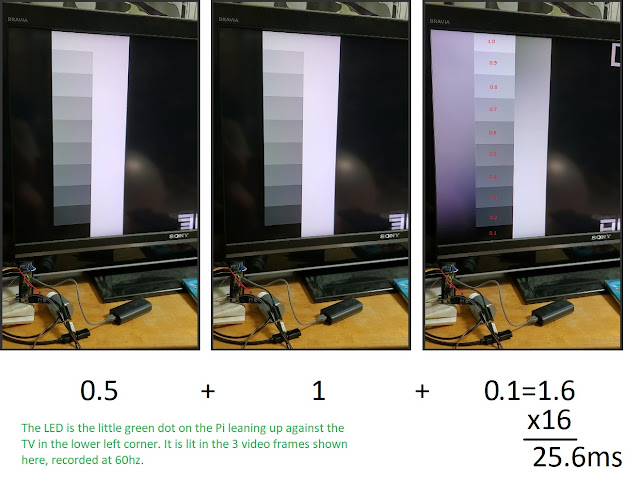Download and install piLagTester for the Raspberry Pi Zero
The piLagTester is a simple DIY device for measuring input lag, using parts that cost $5-10. It's easy to set up since it uses a Raspberry Pi Zero board with zero hardware modifications or any additional parts beyond the normal pi0 accessories. Probably all pi3 and lower will work, but I've not tested that. The Pi4 is definitely not supported, however, due to some dumb choices they made about direct access to the onboard LED.
Once written to SD card you can put it in your pi0 and turn it on.
In order to guarantee the timing is correct I'm providing a custom OS image with the software included and ready to go with no additional configuration. The OS image happens to be the same one as used by the piLagTesterPRO, so that I don't have to maintain multiple OS images and all the required storage.
The direct link is: email me for link
To install this to a 4gb (or larger) micro SD card you'll need to unzip it and then to use an app like win32diskimager, rufus, or equivalent. The raspbian official download page goes into the details so I'll skip them here.
Once written to SD card you can put it in your pi0 and turn it on.
No password required (but it's root/t if you need to know). Consider this encouragement to not have it on the network, since you get tighter timing that way.
All the software lives in /x, which happens to be in the path too. The main executable is inputLagLED
As it's part of the piLagTesterPRO distribution (an advanced version that requires custom hardware) there's other stuff in the /x folder that's not of much use to you, but in particular all the scripts that start with tv are useful for setting the resolution that you will test:
/root #ls /x/tv*
/x/tv1080i /x/tv240p /x/tv480p /x/tvcea /x/tvnative
/x/tv1080p /x/tv480i /x/tv720p /x/tvdmt
That's it. Next up: time to use it!



Comments
BTW, it's not necessary to run piLagTester as root if your user is in the group `gpio` and you disable the led before: `sudo sh -c 'echo none > /sys/class/leds/led0/trigger'`.
no plans for posting the code at the moment. wouldn't be hard to replicate, though.
For me, it's impossible to replicate the code as I don't know how to program something like that ;-)
https://github.com/alanbork/kmsmodeline